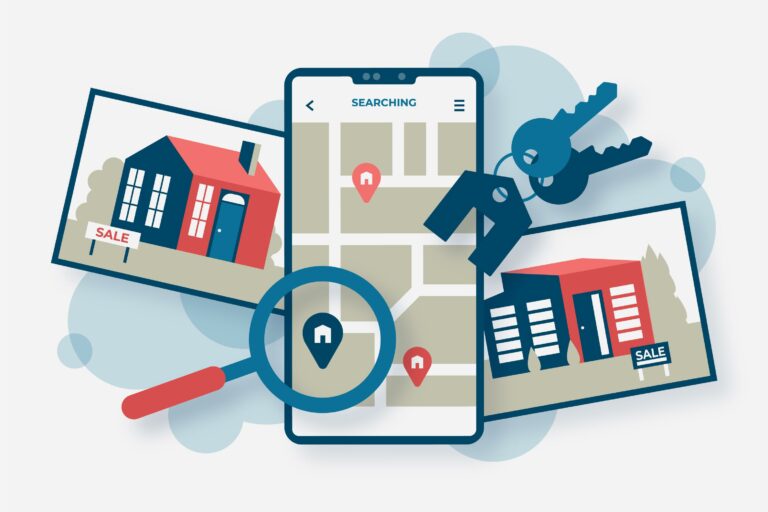5 Ways AI-Powered Software Can Improve Customer Experience
In the rapidly evolving landscape of customer experience, AI-powered software is making waves, transforming the way businesses interact with their clientele. This comprehensive article delves into the various ways AI can dramatically enhance customer experience. It explores five key areas where AI can make a significant impact: personalizing customer experience, streamlining customer support, boosting customer engagement, optimizing customer journey mapping, and employing predictive analysis for improved understanding. As we journey through these vital topics, we’ll uncover the myriad possibilities that AI holds, not only for improving the present state of customer experience but also for shaping its future.
I. Introduction
A. The Evolution of Customer Experience
In the business world, the importance of customer experience has never been more emphasized. Gone are the days when businesses could solely focus on product quality or pricing to win customers. Nowadays, companies compete fiercely on the battleground of customer experience. The evolution of customer experience has been propelled by advancements in technology, the rise of the internet, and the proliferation of social media, all of which have shifted the power to the consumers. Customers are now more informed and demand more – they want seamless, efficient, and personalized experiences. The organizations that are capable of delivering these top-notch experiences are the ones that stand out and succeed in this competitive landscape.
B. Role of AI in Transforming Customer Experience
Artificial Intelligence (AI) has emerged as a game-changer in this aspect. The power of AI to analyze vast amounts of data, learn patterns, make predictions, and automate tasks has profound implications for customer experience. AI-powered software is increasingly becoming an integral part of business strategies, with companies leveraging it to understand customer behavior, personalize experiences, automate customer service, and ultimately, delight the customer at every touchpoint. The advent of AI in customer experience is a defining moment in its evolution, marking the start of a new era where experiences are not just efficient and seamless but also predictive and personalized. This article explores how AI-powered software can transform the customer experience in five key ways.
II. Understanding AI-Powered Software
A. What is AI-Powered Software?
Artificial Intelligence, or AI, is a rapidly evolving field that involves the development of computer systems capable of performing tasks that would usually require human intelligence. These tasks include understanding natural language, recognizing patterns, learning from experience, and making decisions. AI-powered software, then, refers to applications that utilize AI technologies, like machine learning, deep learning, and natural language processing, to provide intelligent capabilities. These capabilities may include interpreting data, predicting outcomes, automating tasks, and even simulating human interaction.
AI-powered software can vary widely in complexity, from simple rule-based systems that automate repetitive tasks to advanced systems that learn and adapt over time. They span across various sectors and industries, from healthcare and education to finance and customer service. The uniting factor is that all AI-powered software aims to enhance human capabilities and improve efficiency and productivity.
B. How AI-Powered Software Works in Customer Experience
In the realm of customer experience, AI-powered software works by harnessing and analyzing the vast amounts of customer data available. This data can range from personal details and purchase histories to social media activity and website behavior. By applying machine learning algorithms, AI can identify patterns and trends, make predictions, and generate insights into customer behavior and preferences. This allows businesses to deliver more personalized and relevant experiences.
Moreover, AI-powered software can automate various customer interactions, such as answering queries or providing recommendations, through intelligent chatbots and virtual assistants. These systems can understand natural language, learn from past interactions, and even simulate human-like conversation, ensuring that customers receive timely and appropriate responses. This not only improves efficiency and consistency but also allows businesses to offer 24/7 customer support.
Ultimately, AI-powered software enhances the customer experience by making it more personalized, efficient, and convenient. Whether it’s recommending a product based on a customer’s browsing history or answering a query in the middle of the night, AI is there to ensure that the customer’s needs are met in the most effective way possible.
III. Way 1: Personalizing the Customer Experience
A. Understanding Customer Personalization
Customer personalization is the strategy of creating customized experiences to meet individual customer needs or preferences. The aim is to provide a unique, individualized interaction that leaves the customer feeling understood and valued. It can include personalized product recommendations, tailored marketing messages, or customized website interfaces. This approach has proven to be successful in increasing customer satisfaction, loyalty, and ultimately, sales.
However, achieving true personalization can be a complex task. It requires the collection and analysis of vast amounts of customer data, understanding individual customer preferences, predicting future behavior, and delivering a personalized experience in real-time. This is where AI-powered software comes into play.
B. How AI-Powered Software Personalizes Customer Experience
AI-powered software plays a significant role in personalizing customer experiences. It’s capable of processing and analyzing vast quantities of customer data at a speed and depth that humans simply cannot match. This can include data about past purchases, browsing history, and even social media activity. From this, AI can identify patterns, make predictions about future behavior, and deliver personalized recommendations or interactions.
For example, AI-powered recommendation engines can suggest products or services that a customer might be interested in based on their past behavior. Similarly, AI chatbots can use previous interactions to provide personalized responses and suggestions.
AI can even take personalization a step further by adapting in real-time to customer behavior. For instance, if a customer begins showing interest in a new product category while browsing a website, AI can instantly adjust product recommendations to reflect this change in interest.
Moreover, AI-powered software allows personalization to be implemented at scale. While a human could certainly provide a personalized experience for a handful of customers, doing so for thousands or even millions of customers would be unfeasible. But with AI, businesses can offer a high degree of personalization to each and every customer, regardless of the number.
In this way, AI-powered software empowers businesses to deliver highly personalized customer experiences that drive satisfaction and loyalty.
IV. Way 2: Streamlining Customer Support with AI
A. Role of AI in Customer Support
Customer support is a critical component of customer experience. In today’s fast-paced digital age, customers expect timely, efficient, and effective support. If their issues or inquiries aren’t addressed promptly and satisfactorily, their overall perception of the business could be significantly tarnished.
Here’s where AI comes to the rescue. It plays a pivotal role in enhancing customer support services. AI technologies like chatbots, virtual assistants, and automated response systems can help businesses provide faster and more efficient customer support. AI can handle common customer inquiries, troubleshoot basic problems, and provide immediate responses, freeing up human customer service agents to deal with more complex issues.
Moreover, AI is not just about speed and efficiency. It can also contribute to the quality of customer support. With its capability to process vast amounts of data, AI can provide customer service agents with valuable insights about customers’ past interactions, preferences, and issues. This information can help agents provide more personalized and effective support.
B. AI-Powered Customer Support Tools
There are a variety of AI-powered tools available to help businesses enhance their customer support. These include AI chatbots, AI-powered CRM (Customer Relationship Management) systems, and AI-driven customer analytics tools.
AI chatbots, for instance, are capable of interacting with customers in real-time, addressing common inquiries, and providing immediate support. They can work round the clock, ensuring customers receive help whenever they need it.
AI-powered CRM systems can go beyond storing customer data. They can analyze this data to provide insights, identify trends, predict future behavior, and even suggest optimal ways to interact with each customer.
AI-driven customer analytics tools, on the other hand, can analyze customer interactions across various touchpoints to provide a holistic view of the customer’s journey. This can help businesses identify areas where support can be improved.
In a nutshell, AI-powered software is transforming the way businesses provide customer support, making it faster, more efficient, and more effective. Businesses that leverage these tools can significantly improve their customer support, thereby enhancing the overall customer experience.
V. Way 3: Enhancing Customer Engagement
A. Importance of Customer Engagement
Customer engagement has emerged as a key driver in sustaining the competitive edge for businesses in today’s customer-centric era. It’s about more than just selling products or services; it’s about building meaningful, enduring relationships with customers. Engaged customers tend to be more loyal, make more purchases, and act as brand advocates, sharing positive experiences with their networks.
When customers engage with a brand, they interact more, providing valuable data and insights. These interactions can help businesses understand their customers better, identify opportunities for growth, and detect potential issues early.
However, fostering customer engagement is easier said than done. With an abundance of choices at their fingertips, consumers have become increasingly demanding. They expect personalized experiences that resonate with their needs and preferences, and they want businesses to recognize them as individuals. They also expect consistency across different touchpoints, whether it’s a brick-and-mortar store, a website, a mobile app, or social media.
B. AI in Boosting Customer Engagement
This is where AI-powered software comes into play. By processing vast amounts of data and learning from it, AI can help businesses understand their customers on a deeper level, enabling them to provide more personalized and engaging experiences.
AI can analyze customer behavior, preferences, and past interactions to predict what customers want, like, and need. It can then use these insights to personalize content, recommendations, and interactions, making customers feel understood and valued.
AI-powered marketing automation tools, for instance, can deliver personalized messages at the right time, on the right channel, increasing engagement rates. Similarly, AI-powered recommender systems can suggest products or content based on a customer’s browsing history, previous purchases, and other data points, enhancing their experience.
AI can also make the customer journey smoother and more enjoyable. For instance, AI-powered virtual assistants can provide prompt, personalized support, while AI-driven user interface design tools can make websites or apps more user-friendly and engaging.
In summary, AI-powered software can significantly enhance customer engagement by enabling businesses to understand their customers better, personalize interactions, and provide a seamless, enjoyable customer journey. It’s a powerful tool that can take customer engagement – and thus the overall customer experience – to a whole new level.
VI. Way 4: Optimizing Customer Journey Mapping
A. Understanding Customer Journey Mapping
Customer Journey Mapping is a powerful tool in the hands of businesses looking to understand their customer experience. It’s essentially a visual story of a customer’s interactions with a brand from the initial contact, through the process of engagement, and into a long-term relationship. It allows businesses to visualize their customer’s experiences across multiple touchpoints, identify potential areas of friction, and find opportunities for improvement.
Every customer journey map is unique and reflects the specific experience a customer or a customer segment has with a brand. Typically, it includes stages like awareness, consideration, purchase, and post-purchase experience. Across each of these stages, businesses map out customer touchpoints, emotions, and pain points, creating a holistic view of the customer experience.
The power of customer journey mapping lies in its ability to shift businesses’ perspective from inside-out (what we think our customers experience) to outside-in (what our customers actually experience). However, creating an accurate and helpful customer journey map requires a deep understanding of customers, and that’s where traditional methods can fall short.
B. Role of AI in Customer Journey Mapping
The potential complexities of modern customer journeys, which can span multiple channels and touchpoints, can make them difficult to map accurately using traditional methods. This is where AI comes in, offering a high-tech solution to this challenge.
AI-powered software can analyze large volumes of customer data from various sources in real time. This data might include online behavior, purchase history, customer feedback, social media interactions, and more. By leveraging machine learning algorithms, AI can identify patterns and trends in this data, providing valuable insights about the customer journey that might be missed by human analysts.
For instance, AI can determine the most common paths customers take before making a purchase or identify touchpoints that consistently lead to high customer satisfaction or dissatisfaction. It can also predict future behavior, allowing businesses to anticipate customer needs and adjust their strategies accordingly.
Furthermore, AI can continuously update the journey map based on new data, ensuring that it accurately reflects the current customer experience. This dynamic, real-time mapping can help businesses respond to changes in customer behavior more swiftly.
In short, AI can supercharge customer journey mapping, providing deeper insights and more accurate, up-to-date maps. This, in turn, can lead to a more effective, personalized, and satisfying customer experience.
VII. Way 5: Predictive Analysis for Better Customer Understanding
A. The Power of Predictive Analysis
Predictive analysis is a branch of advanced analytics that uses both new and historical data to foresee outcomes, trends, and behaviors. It makes use of statistical algorithms, machine learning techniques, and artificial intelligence to analyze current data and make predictions about the future. The power of predictive analysis lies in its ability to reveal trends and patters that might be otherwise invisible to the human eye.
In the context of customer experience, predictive analysis can be a game-changer. Businesses can use it to anticipate customer needs, improve product recommendations, enhance marketing campaigns, and optimize customer support. Predictive analysis allows businesses to be proactive rather than reactive, addressing potential issues before they even arise and taking advantage of opportunities as soon as they appear.
As customers come to expect increasingly personalized experiences, businesses that leverage predictive analysis can differentiate themselves from the competition, boost customer satisfaction, and drive growth. However, harnessing the power of predictive analysis requires the ability to process and analyze vast amounts of data – a task for which AI is perfectly suited.
B. How AI Uses Predictive Analysis for Customer Experience
Artificial Intelligence, particularly machine learning, is an essential component of modern predictive analysis. It can process and analyze vast amounts of data at a speed and scale that would be impossible for humans. AI algorithms learn from this data, identifying patterns and making predictions about future outcomes.
AI-powered software can leverage predictive analysis in numerous ways to enhance customer experience. For instance, it can predict customer behavior based on historical data, helping businesses anticipate customer needs and personalize their offerings. It can forecast which customers are likely to churn, allowing businesses to take proactive steps to retain them.
Predictive analysis can also improve customer segmentation, enabling more targeted marketing campaigns. By predicting which customers are most likely to respond to a specific marketing message, AI can help businesses optimize their marketing efforts and improve ROI.
In the realm of customer support, AI can predict which issues are most likely to lead to customer complaints and address them proactively. It can also forecast peak times for customer support queries, enabling businesses to allocate resources more effectively.
In conclusion, AI’s ability to harness the power of predictive analysis can significantly enhance the customer experience. By enabling businesses to anticipate customer needs, personalize experiences, and address issues proactively, AI-powered predictive analysis represents a major step forward in customer experience management.
VIII. Conclusion
A. Recap and Key Takeaways
The world of customer experience is evolving rapidly, and artificial intelligence is a key driver of this transformation. As we have seen throughout this article, AI-powered software has the potential to significantly improve the way businesses interact with their customers.
AI can personalize the customer experience, streamlining interactions based on individual preferences and behaviors. It can boost customer support by answering queries promptly and efficiently, reducing wait times and freeing up human agents for more complex tasks. AI also enhances customer engagement, delivering relevant content at the right time to the right person.
Through optimizing customer journey mapping, AI offers a more in-depth understanding of customer behavior and experience. And with predictive analysis, businesses can foresee trends, optimize their services, and take a proactive approach to customer relations.
In summary, integrating AI-powered software into your customer experience strategy can result in happier customers, improved service, and a significant edge over competitors.
B. Future Trends of AI in Customer Experience
Looking ahead, AI is set to further revolutionize the customer experience. We can expect even more personalized experiences as AI algorithms continue to learn and adapt. AI will likely play an even greater role in customer support, with sophisticated chatbots capable of handling increasingly complex queries.
Predictive analysis will continue to become more accurate and powerful, enabling businesses to anticipate customer behavior and needs even more effectively. AI may also begin to predict broader market trends, allowing businesses to stay ahead of the curve.
Finally, as customers grow more comfortable with AI, we may see an increase in the use of voice assistants and other AI interfaces for customer interactions. These developments could further streamline the customer experience, making it more seamless and intuitive than ever before.
While the future of AI in customer experience is undoubtedly exciting, it’s essential for businesses to remember the importance of human touch. AI can enhance the customer experience in countless ways, but it can’t replace the empathy, understanding, and personal connection that only a human can provide. Therefore, the most successful businesses will be those that can strike the right balance between AI-powered efficiency and human-centric service.







